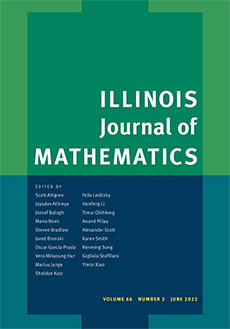Abstract
The main result of this paper is that every Riemann surface has a Hall ray at each cusp. By this we mean that the spectrum of maximal penetration heights of geodesics into a horocycle about the cusp fills out a real half-line. For the modular surface, this result is well known and derives from Hall's Theorem for continued fractions.
We also show that a Hall ray can exist without the presence of cusps in two settings: First, on a surface derived as a limit of cusped surfaces, whose fundamental region contains two entire horocycles. And second, with respect to a hyperbolic continued fraction for which the former role of a cusp is played by a simple closed geodesic.
The limiting process mentioned above also produces an infinite class of closed geodesics on the theta surface, the quotient of the upper half-plane by the usual theta group, that are pair-wise equal in length, but whose precursors in the limit process are never equalm—this equality is then accidental. That is, there is a change in length spectrum multiplicity at the limit surface.
Citation
Thomas A. Schmidt. Mark Sheingorn. "Riemann surfaces have Hall rays at each cusp." Illinois J. Math. 41 (3) 378 - 397, Fall 1997. https://doi.org/10.1215/ijm/1255985734
Information





